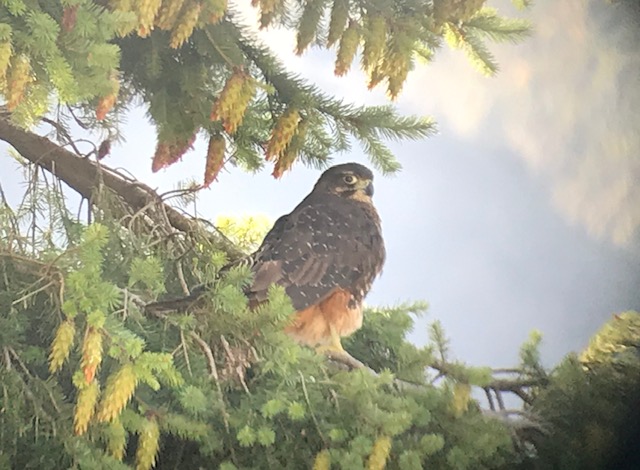It was breezy as we packed the van, and shortly after leaving Wanaka it started to spot with rain, then light rain, and then as we got closer to Queenstown it was really raining quite hard. This was not looking good! We had some lovely atmospheric views of Queenstown and surrounds as we wound our way down the Crown Range Road, with rainbows and big rain filled clouds. We encountered a little traffic as we got closer to Queenstown, and then stopped for coffee and fuel.
As we headed along the shores of Lake Wakatipu it really was raining pretty hard, and the skies were looking pretty black. Oh boy! We pushed on, making a few quick stops along the way, then grabbed some lunch in Te Anau, and onwards towards Milford Sound. Our big focus for the day was rock wren – a sometimes tricky species at the best of times. Let alone when the sky is letting loose and the wind is blowing. We had our lunch in the van, donned our warm stuff and wet weather gear and headed out. We got into position and the rain was pretty steady, it really was not looking good. Why would a bird that has more sense than us, come out of the shelter beneath the rocks to dance around in the wind and rain! It wasn’t long and the first victims started to fall, heading back to the van for shelter. But the bird was still not seen. We waited, and waited, the stalwarts starting to look a little damp around the edges. It was cool, the wind didn’t help, but every now and then the rain would ease off a little.
All of a sudden during one of these periods a distinct sound was heard, that of rock wren, the first definitive clue these birds hadn’t gone for vacation in Fiji! The stalwarts gathered, peering up the slope towards where the sound had come from, and another couple of peeps from the bird. Rick’s sharp eyes detected movement, and there about 70m up the boulder slope was a bird, then two birds, bobbing characteristically on the top of boulders. We yelled at the others in the van who had seen the movement of the stalwarts, and they came running in time to see both birds well. The birds stayed visible for a couple of minutes, coming closer and standing prominently on the tops of the rocks for all to see. They gradually disappeared, a few peeps being heard, and then it was as if nothing had happened. The boulder field looked empty again and the spots of rain started to fall again…
We decided that we had seen about as much as we were likely to see, it had only been 1.25 hours wait, and to be honest with the weather the way it was we had been incredibly lucky! We headed back to the van, seeing a kea fly high over head, and then headed off towards Milford Sound. As we headed down to the coast the weather got better anf the rain stopped. Mitre Peak was sticking its head through a bit, with some atmospheric cloud around, and of course with the rains there were literally hundreds of waterfalls. Spectacular!
After a scenic stop, we headed back towards Te Anau. A couple of scenic photo stops, a few stops to check for blue duck (alas none today) and then a short forest walk. The forest was still dripping, the mosses and ferns swollen with rain, but the skies overhead were clearing and the sun peeping through. And there were birds! Rifleman seemed to be everywhere, nice and low down and great views had by all of multiple birds. Tomtits and several robins were around and the latter bouncing off people’s feet! We had a little flock of yellow-crowned parakeets feeding in the mossy branches of the beech trees overhead – perhaps 6-8 birds. And then a flock of about 15 brown creeper came in to check us out, with fantails, tomtits, several more rifleman, and bellbirds mobbing and chattering. About as birdy as the forest could be!
From there it was back to Te Anau, checking into the accommodation and then off for a great dinner. Hoorah for rock wren!
Bird of the day– Rock wren x8
 |
| Rainbow over Queenstown |
 |
| The search begins |
 |
| Water water waterfalls |
 |
| Moody light and mountains |
 |
| Mosses mosses and more mosses |
 |
| iPhone South Island robin |




























